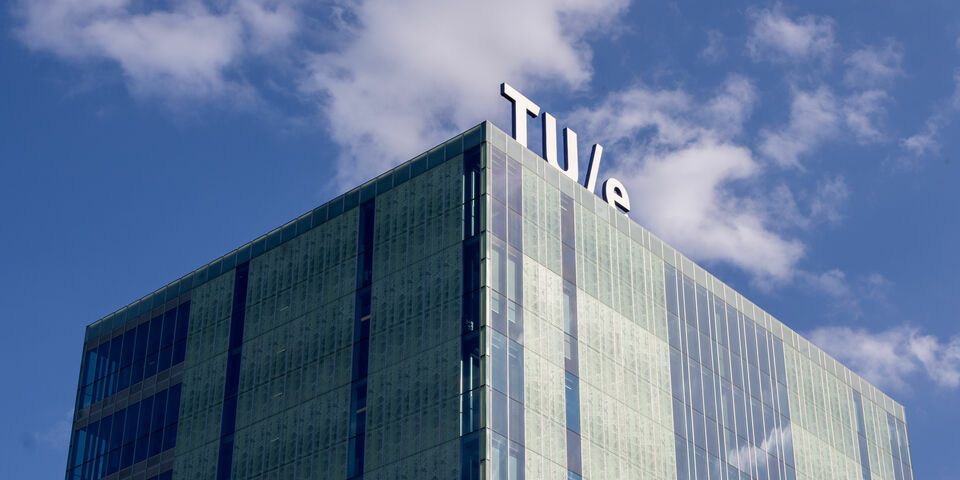TU/e takes active role in Brainport scale jump
The Brainport region is to expand substantially, but the path of the scale jump is fraught with social and technological challenges. Therefore, TU/e wants to take a proactive role and use its knowledge and research strength to realize the growth. The Department of the Built Environment is taking the lead in this process.
To this end, the department will make use of the Urban Development Initiative (UDI). This is an existing public-private partnership formed by TU/e, Brainport Development, and the municipalities of Eindhoven and Helmond to find solutions to major systemic urban challenges. The partnership will take the Brainport Region’s scale jump as its focus for the coming years, aiming to accelerate it through research and development in order to realize sufficient, affordable, and sustainable housing, business locations, and facilities, and to improve the region’s accessibility.
“And that includes the energy, mobility, and water needs that come with that,” says Pieter van Wesemael, professor of Urbanism and Urban Architecture and the department’s coordinator of the UDI collaboration with respect to the scale jump. “Within the Department of the Built Environment, cooperation is always sought with the EIRES and EAISI institutes and the other departments and disciplines. This is based on the content of the issue at hand, and the disciplinary expertise required to tackle it.”
The aim is to create a structural innovation ecosystem for the built environment, similar to the one the Brainport region has for the high-tech industry
Unique
New partners are jumping on board, such as TNO and the Metropolitan Region Eindhoven (MRE), the intermunicipal partnership of 21 municipalities in Southeast Brabant, which is responsible for realizing the scale jump agenda. Discussions are also taking place with the Dutch Design Foundation.
“It’s unique that 21 municipalities are joining forces in a regional collaboration to address and solve challenges through a coherent program,” Van Wesemael says. “The aim is to create a structural innovation ecosystem and long-term culture of collaboration for the built environment, similar to the one the Brainport region has for the high-tech industry.”
One could say that all major challenges are in the area of the built environment. This is all the more apparent here in the region
Fourth-generation university
The department plans to contribute to the initiative in three ways. Firstly, by sharing existing knowledge with partners to better understand what’s needed to solve the task. This includes new products, services, and systems. Secondly, by further exploring in-depth research and innovation projects to – thirdly – test and optimize the resulting models and prototypes through example projects in the MRE.
The university will, therefore, start focusing more on the outside world. This constitutes another step toward a fourth-generation university characterized by collaborations with external partners to solve fundamental issues. “One could say that all major challenges are in the area of the built environment,” says Van Wesemael. “This is all the more apparent here in the region. Our contribution to the scale jump therefore directly aligns with TU/e’s aim to increase its social impact. We’re going to adopt a perspective that’s more ‘outside-in’, listening carefully to the needs of the outside world.”
Over the next two months, plans will be elaborated in the areas of digitization in the built environment, housing and spatial planning, energy, and mobility. The university is doing this together with experts from MRE, TNO, and other interested parties. “From there, we’re going to see how we can expand collaborations with other departments and experts,” Van Wesemael says. If possible, the information will be shared with the public. “We’re working toward a big event in the fall, where the results and the best innovation projects will be presented.”
De schaalsprong
The scale jump
Thanks to its economic success, Brainport Eindhoven faces tremendous challenges in terms of housing, mobility, and infrastructure. Not only must additional technical talent be brought to the region from abroad, there’s also a need to create more than 62,000 new homes by 2030, make space for new business establishments, construct new roads, and renovate the railway station.
“Each of these are crucial location features that are a prerequisite to the future success of the Brainport Region and the smart high-tech industry. In that sense, the scale jump is vital for the MRE and the Netherlands as a whole,” van Wesemael says.
To accelerate the process, 2.51 billion has been freed up by way of Project Beethoven. However, the scale jump covers more than just housing, mobility, and infrastructure. It’s primarily a technical and social challenge to realize the task at such a rapid pace and to allow as many people as possible to benefit from the region’s growth.
“With the research we do here and the innovations we develop, we can make important contributions to knowledge, method, and theory formation in all engineering disciplines,” says Van Wesemael. “For staff and students, it will be an additional motive to come to Eindhoven. After all, every engineer wants to be able to develop concrete solutions and innovations for society’s major practical problems. Moreover, it will strengthen collaboration between disciplines and departments within the university and beyond.”


Discussion